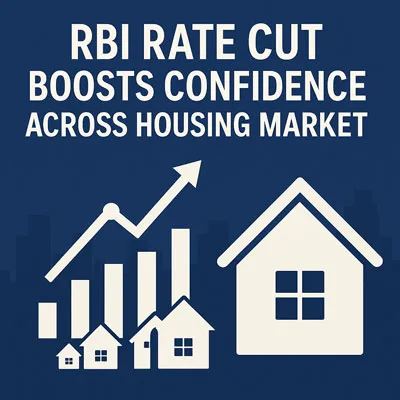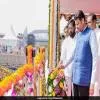Digital transformation in the pump industry can change the way we produce, the rate at which we produce and the place where we produce, writes RANGANATH NK.Digitalisation is a continuous process that is now fundamental for the development of business operations in any industry. As we see the rapid transition in innovative technologies, the pace of shifting the business from mainstream to digital is also increasing. Industries are implementing automated processes to improve the overall production process and efficiencies, which will ultimately improve their competitive position in the market. In this current day and age where we see the world is competitive and fast-paced, it is important to keep pace with ongoing trends and be part of the change to ensure organisations remain relevant and competitive. According to IDC's Worldwide Smart Manufacturing 2019 predictions, 80 per cent of manufacturers will need to extensively restructure their operations, placing data at the centre of their processes to increase speed, agility, efficiency and innovation. The future of manufacturing will be additive manufacturing (AM) or 3D printing.Technology and digitalisation on a par with global standards will play the most critical role in all areas, including developing water infrastructure in the country. Innovative technologies have been disrupting the water industry and pump sector in the past decade. Technology-driven solutions have been augmenting existing water infrastructure as well as improving water accessibility and reuse while simultaneously reducing wastage. It is thus imperative that AI, virtual reality and augmented reality (VR and AR), AM, material tracking mechanisms, automated product design, robotics and wearables, when integrated seamlessly across production processes coupled with new materials of construction, play a larger role in delivering zero-error results and help produce best-in-class solutions. New materials will enable 3D printing and this can change the way we produce, the rate at which we produce and the place where we produce.Grundfos has been working with 3D printing for over 10 years now but mostly focused on rapid prototyping. However, because of the need to ensure reduction in carbon emissions, reduce long lead times owing to shipping across continents, reduce inventory and enable mass customisation, 3D printing is being tried out by Grundfos as well as many other sectors of industry, including the food industry. 3D printing allows organisations to find new ways to manufacture their products more efficiently and at a lower cost. It brings down the time from concept to market considerably and enables manufacturers to physically produce intricate geometries and designs, which are normally difficult or time-consuming in conventional processes. A Price Waterhouse Cooper survey conducted in 2016 found that 71.1 per cent of US manufacturers are applying 3D printing technology in some way or the other; this grew slightly more from 67 per cent in 2014. Manufacturing pump components can be a costly process, making 3D printing the ideal solution for companies to take advantage of, provided we perfect the process to 3D print metal and are able to mass produce. Materials used for 3D printing pumps can range from polylactic acid to stainless steel, presenting enormous opportunities for companies who adopt the technology to improve their bottomline. Conventional manufacturing requires moulds and special tooling for machined parts that get eliminated if we use AM. 3D printing maximising efficiencyIn the past, design engineers had to change the majority of their optimal pump designs because of the limitations of the manufacturing process. Moulds often took weeks to create as they were not precise and many complex profiles could not be created owing to lack of accuracy in design. With industrial 3D printing, complexity can be easily handled, so pump engineers can design pumps and parts with highly specialised geometries that can support manufacturers’ efforts to improve overall equipment efficiencies. 3D printing pump components can be significantly beneficial for those who produce complex parts for pumps. Increasing fabrication, speed and efficiency while maintaining accuracy and precision are present challenges for manufacturers and have spurred innovation within the industry to lower costs and deliver a better product to customers. At Grundfos, we have set up an AM lab and have been using a dual laser system to print metal impellers.In the initial stages of product design and development, computer-aided designing and 3D printing can be used to create prototypes quickly and eliminate the need for a trial-and-error method that tends to be a waste time, energy and resources. For instance, at Grundfos, innovation and digitisation are two essential pillars; keeping these in mind, we currently use 3D printing to create prototypes. It helps us work with new materials and make complex components for the actual products that will help improve performance. In sales and marketing, 3D printing can also be used to showcase the products to potential customers. In the future, the sales and marketing team can leverage other technologies such as AR and VR to further expand their capabilities. Overall production can be streamlined through a smart supply chain that creates leaner processes. The most significant impact will be on the location of factories, supply chain and inventory. 3D printers can be located close to the markets for the products and parts can be made for either one pump or thousands of pumps based on the need—true lean manufacturing. There is no need to stock components and finished goods as they can be printed after receipt of the order, thus bringing down the cash blocked in inventories and work in process.Manufacturers both big and small are assessing how to shape or expand the overall digitalisation process. Doing so would enable further improvements in terms of operating characteristics of all systems, including pumps. As with any disruptive technology adoption, businesses take different directions and discover trendsetting solutions. 3D printing is one such disruptive technology that is growing at a rapid pace. As they say, if it can be designed, it can be printed.About the author: Ranganath NK represents Grundfos India as its Ambassador on various external platforms, organisations and forums focusing on sustainability (including the UN’s Sustainability Goals) and CSR. After 22 years with Grundfos, he retired from day-to-day work as the area managing director, INDO region, on April 3, 2020. He joined Grundfos in February 1998, to establish Grundfos India in March 1998. He has over 40 years of industry experience covering marketing, sales, design, project management, finance and human resources. Prior to joining Grundfos, he was director of IAEC Industries. His focus has and remains water and energy conservation.





















